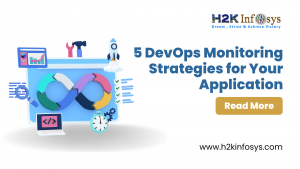There are no foolproof, “silver bullet” solutions for increasing IT efficiency, but DevOps has produced benefits that are difficult to deny. DevOps, as the name implies, integrates software development with operations principles to assist businesses in producing goods more quickly and effectively.
The 2017 State of DevOps Report findings point to notable distinctions between high-performing firms that use DevOps principles and those that do not. The paper claims that high-performance businesses greatly outperform their less effective counterparts in terms of software deployment frequency (46 times higher), lead times for modifications (440 times faster), and software change failure rates (five times lower).
Despite these substantial advantages, DevOps serves as a typical illustration of a crucial, relatively new technical concept that has far too frequently been misapplied or misinterpreted. Even a simple explanation of DevOps might be difficult to grasp for many people.
This ambiguity may have detrimental repercussions on teams and companies intending to embrace DevOps concepts, leading to strategic muddling and obstructing the speed and efficiency that DevOps is meant to promote.
Executives and project managers need to become proficient in DevOps to be competitive and make sure their teams are operating at peak efficiency as software development and operations become more entwined and as organisations become more dependent on cloud infrastructure.
DevOps is an important concept with the ability to significantly enhance goods and enterprises, not just another hazy jargon. This article’s primary goal is to define DevOps precisely for its target audience, who are primarily non-technical. You can learn more about DevOps by checking out the online DevOps training.
What DevOps is all about.
The goal of DevOps is to transform labour-intensive manual procedures involving clumsy human interaction into an instrumented strategy that can be evaluated, measured, and scaled with ease.
What DevOps means as a discipline becomes clearer when one is aware of what a DevOps practitioner and culture look like. DevOps is, to put it briefly, the process of converting labour-intensive manual procedures involving human interaction into an instrumented strategy that can be tested, measured, and easily scaled. Instead of giving a piece of code to the infrastructure team, a developer can start an automated process that will perform the necessary task in a consistent and tested manner, yielding the desired results quickly, and making collaboration possible. For instance, if a developer wants to create a space where business users can provide feedback, he or she can issue a command created by the DevOps team.
Understanding the meaning of DevOps as a category of engineer, culture, and practice is necessary for a thorough description of the term. Now that we have looked at what DevOps implies from different angles, it is crucial to examine what DevOps looks like when it is successfully applied.
Toolkit for DevOps
Companies need to grasp a number of particular strategies and tools essential to DevOps in addition to the aforementioned culture transformation, which involves moving from a firm that silos software developers and infrastructure professionals to one that promotes their collaboration. Three of the most important practices—though by no means the only ones—are listed below:
- Automation
The core goal of DevOps has increased productivity, which is largely attained by automating a variety of labour-intensive, slow-moving procedures in software development and infrastructure upkeep. One particular instance given by Amazon is the routine of automatically disseminating tiny yet frequent software upgrades. Systems administrators are relieved of the responsibility of doing these upgrades manually as a result of this approach. As noted by Amazon, this method also has the advantage of reducing the risk associated with the deployment of software by making it simpler for administrators to find and address any potential flaws. DevOps is built around automation, which is also essential to the other DevOps practices.
- Continuous Integration
DevOps is really about close teamwork between engineers and other team members. Engineers exchanging and merging code in one place is referred to as continuous integration. According to Amazon, “In the past, developers on a team might work in isolation for a considerable amount of time and only attempt to merge their changes… once their work was finished.” By using continuous integration, developers may work together more effectively and stay away from the bottlenecks that come with developing and merging their code in a more fragmented way.
- Continuous Delivery
The process of automatically distributing and executing software product changes as they are made is known as continuous delivery. In other words, Continuous Integration makes Continuous Delivery possible since the only way to efficiently push changes to the entire system is if the code is already centralised. Additionally essential to continuous delivery is automation. In fact, the aforementioned instance of sending brief but frequent system updates can also be considered a Continuous Delivery example. Organisations can swiftly implement changes and enhancements thanks to continuous delivery, and engineers may focus their time more effectively on more difficult problems.
Why DevOps Really Matters
There are several advantages to using DevOps principles, some of which have already been mentioned, such as improved efficiency, security, and corporate collaboration. This improvement in efficiency is quantified in the 2017 State of DevOps Report, which states that top-performing firms using DevOps principles spend 44 percent more time on new work and 21 percent less time on rework and unplanned work.
However, more generally speaking, properly deploying DevOps practices can have a significant influence on your business by enhancing efficiency and execution in crucial but rather unglamorous areas.
DevOps engineers can effectively serve as an organisation’s internal commando team, working to resolve a variety of issues that, despite being unglamorous or out of sight, are absolutely necessary to a business’s smooth operation.
While addressing these issues and increasing productivity are admirable goals in and of themselves, they ultimately serve as a means to a more fundamental goal of creating exceptional products that increase sales and satisfy customers. The ability to maximise each of these Key Performance Indicators is maybe the most significant reason why DevOps is crucial.
Conclusion The importance of DevOps is increasing at the same rate as the market for cloud services. Your business will need to establish DevOps competence, whether it is in the energy, healthcare, or higher education sectors. As you consider utilising this crucial approach going forward, it is crucial to first understand what DevOps is, how it works, and why it is so critical. Check out the DevOps online course to learn more.


























